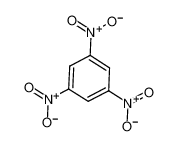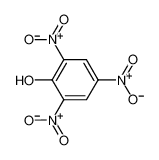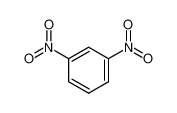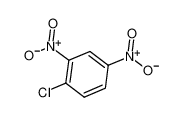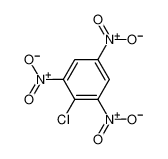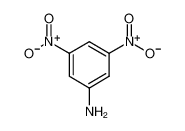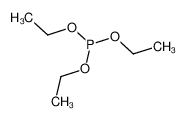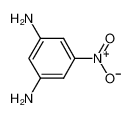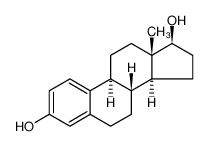1.Identification
1.1 GHS Product identifier
| Product name | 1,3,5-trinitrobenzene |
|---|
1.2 Other means of identification
| Product number | - |
|---|---|
| Other names | 1,3,5-Trinitrobenzene |
1.3 Recommended use of the chemical and restrictions on use
| Identified uses | For industry use only. |
|---|---|
| Uses advised against | no data available |
1.4 Supplier's details
| Company | MOLBASE (Shanghai) Biotechnology Co., Ltd. |
|---|---|
| Address | Floor 4 & 5, Building 12, No. 1001 North Qinzhou Road, Xuhui District, Shanghai, China |
| Telephone | +86(21)64956998 |
| Fax | +86(21)54365166 |
1.5 Emergency phone number
| Emergency phone number | +86-400-6021-666 |
|---|---|
| Service hours | Monday to Friday, 9am-5pm (Standard time zone: UTC/GMT +8 hours). |
2.Hazard identification
2.1 Classification of the substance or mixture
Explosives, Division 1.1
Acute toxicity - Oral, Category 2
Acute toxicity - Dermal, Category 1
Acute toxicity - Inhalation, Category 2
Specific target organ toxicity – repeated exposure, Category 2
Hazardous to the aquatic environment, short-term (Acute) - Category Acute 1
Hazardous to the aquatic environment, long-term (Chronic) - Category Chronic 1
2.2 GHS label elements, including precautionary statements
| Pictogram(s) |  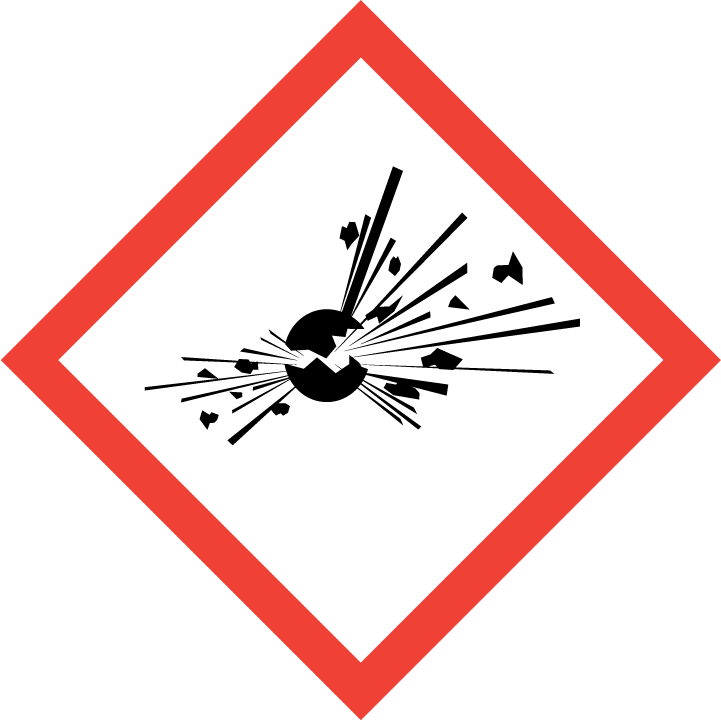   |
|---|---|
| Signal word | Danger |
| Hazard statement(s) | H201 Explosive; mass explosion hazard H300 Fatal if swallowed H310 Fatal in contact with skin H330 Fatal if inhaled H410 Very toxic to aquatic life with long lasting effects |
| Precautionary statement(s) | |
| Prevention | P210 Keep away from heat, hot surfaces, sparks, open flames and other ignition sources. No smoking. P230 Keep wetted with … P234 Keep only in original packaging. P240 Ground and bond container and receiving equipment. P250 Do not subject to grinding/shock/friction/…. P280 Wear protective gloves/protective clothing/eye protection/face protection. P264 Wash ... thoroughly after handling. P270 Do not eat, drink or smoke when using this product. P262 Do not get in eyes, on skin, or on clothing. P260 Do not breathe dust/fume/gas/mist/vapours/spray. P271 Use only outdoors or in a well-ventilated area. P284 [In case of inadequate ventilation] wear respiratory protection. P273 Avoid release to the environment. |
| Response | P370+P372+P380+P373 In case of fire: Explosion risk. Evacuate area. DO NOT fight fire when fire reaches explosives. P301+P310 IF SWALLOWED: Immediately call a POISON CENTER/doctor/… P321 Specific treatment (see ... on this label). P330 Rinse mouth. P302+P352 IF ON SKIN: Wash with plenty of water/... P310 Immediately call a POISON CENTER/doctor/… P361+P364 Take off immediately all contaminated clothing and wash it before reuse. P304+P340 IF INHALED: Remove person to fresh air and keep comfortable for breathing. P320 Specific treatment is urgent (see ... on this label). P314 Get medical advice/attention if you feel unwell. P391 Collect spillage. |
| Storage | P401 Store in accordance with… P405 Store locked up. P403+P233 Store in a well-ventilated place. Keep container tightly closed. |
| Disposal | P501 Dispose of contents/container to ... |
2.3 Other hazards which do not result in classification
none
3.Composition/information on ingredients
3.1 Substances
| Chemical name | Common names and synonyms | CAS number | EC number | Concentration |
|---|---|---|---|---|
| 1,3,5-trinitrobenzene | 1,3,5-trinitrobenzene | 99-35-4 | none | 100% |
4.First-aid measures
4.1 Description of necessary first-aid measures
General advice
Consult a physician. Show this safety data sheet to the doctor in attendance.
If inhaled
If breathed in, move person into fresh air. If not breathing, give artificial respiration. Consult a physician.
In case of skin contact
Wash off with soap and plenty of water. Consult a physician.
In case of eye contact
Rinse thoroughly with plenty of water for at least 15 minutes and consult a physician.
If swallowed
Never give anything by mouth to an unconscious person. Rinse mouth with water. Consult a physician.
4.2 Most important symptoms/effects, acute and delayed
Excerpt from ERG Guide 113 [Flammable Solids - Toxic (Wet/Desensitized Explosive)]: Some are toxic and may be fatal if inhaled, swallowed or absorbed through skin. Contact may cause burns to skin and eyes. Fire may produce irritating, corrosive and/or toxic gases. Runoff from fire control or dilution water may cause pollution. (ERG, 2016)
Excerpt from ERG Guide 112 [Explosives* - Division 1.1, 1.2, 1.3 or 1.5]: Fire may produce irritating, corrosive and/or toxic gases. (ERG, 2016)
Excerpt from ERG Guide 113 [Flammable Solids - Toxic (Wet/Desensitized Explosive)]: Some are toxic and may be fatal if inhaled, swallowed or absorbed through skin. Contact may cause burns to skin and eyes. Fire may produce irritating, corrosive and/or toxic gases. Runoff from fire control or dilution water may cause pollution. (ERG, 2016)
4.3 Indication of immediate medical attention and special treatment needed, if necessary
Basic treatment: Establish a patent airway (oropharyngeal or nasopharyngeal airway, if needed). Suction if necessary. Watch for signs of respiratory insufficiency and assist ventilations if necessary. Administer oxygen by nonrebreather mask at 10 to 15 L/min. Monitor for pulmonary edema and treat if necessary ... . Monitor for shock and treat if necessary ... . Anticipate seizures and treat if necessary ... . For eye contamination, flush eyes immediately with water. Irrigate each eye continuously with 0.9% saline (NS) during transport ... . Do not use emetics. For ingestion, rinse mouth and administer 5 ml/kg up to 200 ml of water for dilution if the patient can swallow, has a strong gag reflex, and does not drool. Administer activated charcoal ... . /Aromatic hydrocarbons and related compounds/
5.Fire-fighting measures
5.1 Extinguishing media
Suitable extinguishing media
If material on fire or involved in fire: Dangerously explosive. Do not fight fires in a cargo of explosives. Evacuate area and let burn. /Trinitrobenzene/
5.2 Specific hazards arising from the chemical
Excerpt from ERG Guide 113 [Flammable Solids - Toxic (Wet/Desensitized Explosive)]: Flammable/combustible material. May be ignited by heat, sparks or flames. DRIED OUT material may explode if exposed to heat, flame, friction or shock; treat as an explosive, refer to ERG Guide 112. Keep material wet with water or treat as an explosive, refer to ERG Guide 112. Runoff to sewer may create fire or explosion hazard. (ERG, 2016)
Excerpt from ERG Guide 112 [Explosives* - Division 1.1, 1.2, 1.3 or 1.5]: MAY EXPLODE AND THROW FRAGMENTS 1600 METERS (1 MILE) OR MORE IF FIRE REACHES CARGO. For information on "Compatibility Group" letters, refer to Glossary section. (ERG, 2016)
Excerpt from ERG Guide 113 [Flammable Solids - Toxic (Wet/Desensitized Explosive)]: Flammable/combustible material. May be ignited by heat, sparks or flames. DRIED OUT material may explode if exposed to heat, flame, friction or shock; treat as an explosive, refer to ERG Guide 112. Keep material wet with water or treat as an explosive, refer to ERG Guide 112. Runoff to sewer may create fire or explosion hazard. (ERG, 2016)
5.3 Special protective actions for fire-fighters
Wear self-contained breathing apparatus for firefighting if necessary.
6.Accidental release measures
6.1 Personal precautions, protective equipment and emergency procedures
Use personal protective equipment. Avoid dust formation. Avoid breathing vapours, mist or gas. Ensure adequate ventilation. Evacuate personnel to safe areas. Avoid breathing dust. For personal protection see section 8.
6.2 Environmental precautions
Prevent further leakage or spillage if safe to do so. Do not let product enter drains. Discharge into the environment must be avoided.
6.3 Methods and materials for containment and cleaning up
Pick up and arrange disposal. Sweep up and shovel. Keep in suitable, closed containers for disposal.
7.Handling and storage
7.1 Precautions for safe handling
Avoid contact with skin and eyes. Avoid formation of dust and aerosols. Avoid exposure - obtain special instructions before use.Provide appropriate exhaust ventilation at places where dust is formed. For precautions see section 2.2.
7.2 Conditions for safe storage, including any incompatibilities
Store in cool place. Keep container tightly closed in a dry and well-ventilated place.
8.Exposure controls/personal protection
8.1 Control parameters
Occupational Exposure limit values
no data available
Biological limit values
no data available
8.2 Appropriate engineering controls
Handle in accordance with good industrial hygiene and safety practice. Wash hands before breaks and at the end of workday.
8.3 Individual protection measures, such as personal protective equipment (PPE)
Eye/face protection
Safety glasses with side-shields conforming to EN166. Use equipment for eye protection tested and approved under appropriate government standards such as NIOSH (US) or EN 166(EU).
Skin protection
Wear impervious clothing. The type of protective equipment must be selected according to the concentration and amount of the dangerous substance at the specific workplace. Handle with gloves. Gloves must be inspected prior to use. Use proper glove removal technique(without touching glove's outer surface) to avoid skin contact with this product. Dispose of contaminated gloves after use in accordance with applicable laws and good laboratory practices. Wash and dry hands. The selected protective gloves have to satisfy the specifications of EU Directive 89/686/EEC and the standard EN 374 derived from it.
Respiratory protection
Wear dust mask when handling large quantities.
Thermal hazards
no data available
9.Physical and chemical properties
| Physical state | Trinitrobenzene, wetted with not less than 30% water is a light yellow crystalline sludge or slurry. Burns but may require some effort to ignite. A high explosive when dry. Easily ignited and burns very vigorously when dry. Insoluble in water. Produces toxic oxides of nitrogen during combustion. |
|---|---|
| Colour | Yellow crystals |
| Odour | no data available |
| Melting point/ freezing point | -23°C(lit.) |
| Boiling point or initial boiling point and boiling range | 138°C |
| Flammability | no data available |
| Lower and upper explosion limit / flammability limit | no data available |
| Flash point | 34°C(lit.) |
| Auto-ignition temperature | no data available |
| Decomposition temperature | no data available |
| pH | no data available |
| Kinematic viscosity | no data available |
| Solubility | Soluble in alcohol and ether |
| Partition coefficient n-octanol/water (log value) | log Kow = 1.18 |
| Vapour pressure | 6.44X10-6 mm Hg at 25°C (extrapolated) |
| Density and/or relative density | 1.705g/cm3 |
| Relative vapour density | no data available |
| Particle characteristics | no data available |
10.Stability and reactivity
10.1 Reactivity
no data available
10.2 Chemical stability
Stable under recommended storage conditions.
10.3 Possibility of hazardous reactions
Aromatic nitro compounds, such as TRINITROBENZENE, range from slight to strong oxidizing agents. If mixed with reducing agents, including hydrides, sulfides and nitrides, they may begin a vigorous reaction that culminates in a detonation. The aromatic nitro compounds may explode in the presence of a base such as sodium hydroxide or potassium hydroxide even in the presence of water or organic solvents. The explosive tendencies of aromatic nitro compounds are increased by the presence of multiple nitro groups.
10.4 Conditions to avoid
no data available
10.5 Incompatible materials
The product /potassium 4-methyoxy-1-aci-nitro-3,5-dinitro-2,5-cyclohexadienonide/ of interaction of /1,3,5-/trinitrobenzene and concn aqueous potassium hydroxide in methanol is explosive, and analyses as the hemihydrate of a hemiacetal of the aci-p-quinonoid form of picric acid, and/or the mesomeric o-forms.
10.6 Hazardous decomposition products
When heated to decomposition it emits toxic fumes of /nitrogen oxides/ and explodes.
11.Toxicological information
Acute toxicity
- Oral: LD50 Guinea pig oral 730 mg/kg
- Inhalation: no data available
- Dermal: no data available
Skin corrosion/irritation
no data available
Serious eye damage/irritation
no data available
Respiratory or skin sensitization
no data available
Germ cell mutagenicity
no data available
Carcinogenicity
no data available
Reproductive toxicity
no data available
STOT-single exposure
no data available
STOT-repeated exposure
no data available
Aspiration hazard
no data available
12.Ecological information
12.1 Toxicity
- Toxicity to fish: LC50; Species: Pimephales promelas (Fathead minnow); Conditions: freshwater; static; Concentration: 1030 ug/L for 96 hr /formulated product
- Toxicity to daphnia and other aquatic invertebrates: EC50; Species: Daphnia magna (Water flea); Conditions: freshwater; static; Concentration: 2700 ug/L for 48 hr; Effect: intoxication, immobile /formulated product
- Toxicity to algae: no data available
- Toxicity to microorganisms: no data available
12.2 Persistence and degradability
AEROBIC: The microbial degradation of 1,3,5-trinitrobenzene was incomplete and unsustained in Tennessee river water(1). Nitro group reduction occurred in the presence of added nutrients and lab cultures of Tennessee river microorganisms(1). Simulated biological treatment system, consisting of an aerator inoculated with A. agilis (first stage) and an activated sludge system (2nd stage), initial concn 118-146 mg/L nitroaromatic compounds, 96-98% removal in first stage and 2-4% removal in second stage(2). 1,3,5-Trinitrobenzene at an initial concn of 100 ppm was found to be resistant to biodegradation when incubated 180 minutes in a Warburg respirometer inoculated with a phenol-adapted mixed culture of microorganisms obtained from garden soil, compost, river sediment, and a petroleum refinery waste lagoon(3). 1,3,5-Trinitrobenzene was reported to degrade 84% in 7 days from surface water at room temperature(4). 1,3,5-Trinitrobenzene was degraded an average of 93.5% in 3 days at room temperature in three different soils; Windsor (pH 6.2, clay 30 %, total organic carbon 1.1%), Charlton (pH 6.0, clay 20%, total organic carbon 1.8%), Ft Edwards (pH 8.4, clay 70%, total organic carbon 0.5%)(5).
12.3 Bioaccumulative potential
An estimated BCF of 1.6 was calculated in fish for 1,3,5-trinitrobenzene(SRC), using a log Kow of 1.18(1) and a regression-derived equation(2). According to a classification scheme(3), this BCF suggests the potential for bioconcentration in aquatic organisms is low(SRC).
12.4 Mobility in soil
The Koc of 1,3,5-trinitrobenzene is estimated as 104(SRC), using a log Kow of 1.18(1) and a regression-derived equation(2). According to a classification scheme(3), this estimated Koc value suggests that 1,3,5-trinitrobenzene is expected to have high mobility in soil.
12.5 Other adverse effects
no data available
13.Disposal considerations
13.1 Disposal methods
Product
The material can be disposed of by removal to a licensed chemical destruction plant or by controlled incineration with flue gas scrubbing. Do not contaminate water, foodstuffs, feed or seed by storage or disposal. Do not discharge to sewer systems.
Contaminated packaging
Containers can be triply rinsed (or equivalent) and offered for recycling or reconditioning. Alternatively, the packaging can be punctured to make it unusable for other purposes and then be disposed of in a sanitary landfill. Controlled incineration with flue gas scrubbing is possible for combustible packaging materials.
14.Transport information
14.1 UN Number
| ADR/RID: UN1354 | IMDG: UN1354 | IATA: UN1354 |
14.2 UN Proper Shipping Name
| ADR/RID: TRINITROBENZENE, WETTED with not less than 30% water, by mass |
| IMDG: TRINITROBENZENE, WETTED with not less than 30% water, by mass |
| IATA: TRINITROBENZENE, WETTED with not less than 30% water, by mass |
14.3 Transport hazard class(es)
| ADR/RID: 4.1 | IMDG: 4.1 | IATA: 4.1 |
14.4 Packing group, if applicable
| ADR/RID: I | IMDG: I | IATA: I |
14.5 Environmental hazards
| ADR/RID: yes | IMDG: yes | IATA: yes |
14.6 Special precautions for user
no data available
14.7 Transport in bulk according to Annex II of MARPOL 73/78 and the IBC Code
no data available
15.Regulatory information
15.1 Safety, health and environmental regulations specific for the product in question
| Chemical name | Common names and synonyms | CAS number | EC number |
|---|---|---|---|
| 1,3,5-trinitrobenzene | 1,3,5-trinitrobenzene | 99-35-4 | none |
| European Inventory of Existing Commercial Chemical Substances (EINECS) | Listed. | ||
| EC Inventory | Listed. | ||
| United States Toxic Substances Control Act (TSCA) Inventory | Listed. | ||
| China Catalog of Hazardous chemicals 2015 | Listed. | ||
| New Zealand Inventory of Chemicals (NZIoC) | Not Listed. | ||
| Philippines Inventory of Chemicals and Chemical Substances (PICCS) | Listed. | ||
| Vietnam National Chemical Inventory | Not Listed. | ||
| Chinese Chemical Inventory of Existing Chemical Substances (China IECSC) | Not Listed. | ||
16.Other information
Information on revision
| Creation Date | Aug 12, 2017 |
|---|---|
| Revision Date | Aug 12, 2017 |
Abbreviations and acronyms
- CAS: Chemical Abstracts Service
- ADR: European Agreement concerning the International Carriage of Dangerous Goods by Road
- RID: Regulation concerning the International Carriage of Dangerous Goods by Rail
- IMDG: International Maritime Dangerous Goods
- IATA: International Air Transportation Association
- TWA: Time Weighted Average
- STEL: Short term exposure limit
- LC50: Lethal Concentration 50%
- LD50: Lethal Dose 50%
- EC50: Effective Concentration 50%
References
- IPCS - The International Chemical Safety Cards (ICSC), website: http://www.ilo.org/dyn/icsc/showcard.home
- HSDB - Hazardous Substances Data Bank, website: https://toxnet.nlm.nih.gov/newtoxnet/hsdb.htm
- IARC - International Agency for Research on Cancer, website: http://www.iarc.fr/
- eChemPortal - The Global Portal to Information on Chemical Substances by OECD, website: http://www.echemportal.org/echemportal/index?pageID=0&request_locale=en
- CAMEO Chemicals, website: http://cameochemicals.noaa.gov/search/simple
- ChemIDplus, website: http://chem.sis.nlm.nih.gov/chemidplus/chemidlite.jsp
- ERG - Emergency Response Guidebook by U.S. Department of Transportation, website: http://www.phmsa.dot.gov/hazmat/library/erg
- Germany GESTIS-database on hazard substance, website: http://www.dguv.de/ifa/gestis/gestis-stoffdatenbank/index-2.jsp
- ECHA - European Chemicals Agency, website: https://echa.europa.eu/

